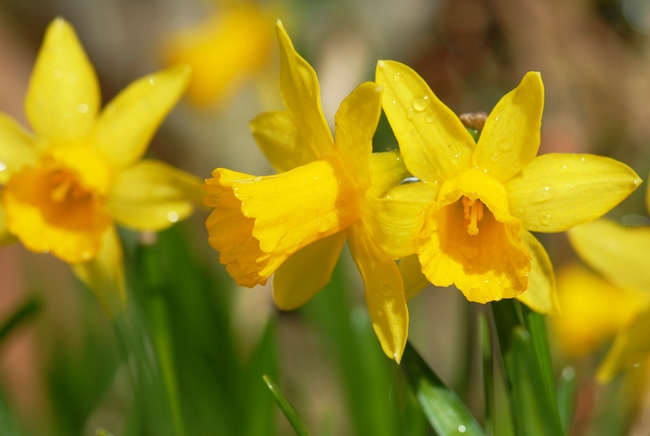Planting Spring Flowering Bulbs
By Leonard Cicerello Master Gardener
Having never planted flowering bulbs, I am not sure what time is right – Angela in Morro Bay.
A little work mid to late fall will reward you dramatically come springtime. Flowering bulbs come in every color of the rainbow, and more. Who does not admire tulips, daffodils, hyacinth, and the many other varieties of spring bulbs?
Begin by choosing healthy bulbs that are not dry, withered, spongy, or moldy. Then choose the right location. Most bulbs require a sunny location and soil that is rich in organic matter, well-drained, and slightly acidic (ph 6-7). To improve existing soil, whether it is too sandy or too heavy, add organic material. Bulbs can also be planted in containers.
Planting depth is not uniform for all bulbs. In general, plant the bulbs to a depth of three times their height. For example, plant allium eight inches deep, crocus three inches deep, daffodils six inches deep, hyacinth seven inches deep, and tulips six inches deep. Place bone meal or superphosphate in the bottom of the planting hole and plant the bulb with its point up, which will become the stem. If rodents are a problem, plant your bulbs in a cage made of ¼”- ½” metal mesh. Water thoroughly after planting. During fall and winter, irrigation is only needed in the absence of rainfall. The premise is to prevent rotting in wet weather.
Bulbs look best in clumps or drifts. To get a natural looking effect, either dig a large area and plant several bulbs at once, or simply toss the bulbs into the air and plant them where they fall. You will be surprised. To make sure that you do not disturb or forget about the bulbs, mark and label each bulb you plant.
When bulbs finish flowering, let the foliage die back naturally before you cut it off at ground level. It is unsightly for a little while, but that time is important to the bulb because it will continue to photosynthesize and store up energy it will need to produce flowers next year.
If you think some of your bulbs are overcrowded, dig them up and divide them after the foliage completely dies back.
Visit www.ucanr.edu/sites/mgslo to see our monthly garden chores for San Luis Obispo County.
